If you’ve recently noticed that your PC is running significantly slower because a strange process in the Task Manager named Altrsik is hogging unreasonable amounts of RAM and CPU, it means you have a crypto-miner Trojan on your hands. Though this malware program is not likely to directly damage or steal anything, it’s definitely something that you’d want to remove. Unless you get rid of this crypto-miner, it will continue to slow down your PC and it might also open a gateway for additional malware.
This Trojan miner is quite common and can be encountered in different variants. For instance, rogue programs such as Altisik or Altruistics are nothing but reskins of Altrsik, meaning they do the exact same thing and display the same behavior.

Regardless of which specific iteration of this Trojan Horse family you have, clearing it from your system is essential but can also be a bit difficult. For this reason, I’ve prepared a specialized removal guide, based on lengthy research on this particular malware, and posted it below. So, if you are currently struggling with Altrsik, I strongly recommend you check the following instructions or directly use the suggested professional removal tool to significantly speed up the removal process.
Altrsik Service Virus Removal Guide
The removal process for Altrsik is lengthy and complex. You must carefully follow each step and perform it exactly as instructed. Skipping even a single step will likely result in an unsuccessful removal. Note that everything linked to this malware must be eliminated else, even if Altrsik seems removed, it could return on its own at a later time.
Before I get to the detailed instructions, here’s a brief overview of the steps you’ll have to complete:
- Install the LockHunter tool and make the hidden files and folders on your PC visible.
- Check the Task Manager: Look for suspicious processes, locate their file directories, delete the associated files, and then terminate the processes.
- Delete leftover malware files in these key locations:
C:\ProgramData\Microsoft\Windows\Start Menu\Programs\StartupC:\Users\YourUsername\AppData\Roaming\Microsoft\Windows\Start Menu\Programs\Startup
- Clear the Task Scheduler.
- Clean up the System Registry.
Before diving into these steps, there’s one more precaution you should take: open the Start Menu, go to Settings > Apps, and sort your installed programs by date. Scan through the list for any recent installs that look unfamiliar or suspicious and remove them immediately.
Each of these steps is broken down in detail below, so don’t worry if it feels overwhelming. By following this guide closely, you’ll be able to track down and fully remove every trace of the Altrsik virus from your system. Take it one step at a time—you’ve got this.
SUMMARY:
| Name | Altrsik |
| Type | Trojan |
| Danger Level | High (Trojans are often used as a backdoor for Ransomware) |
| Detection Tool |
We tested that SpyHunter successfully removes Altrsik* and we recommend downloading it. Manual removal may take hours, it can harm your system if you re not careful, and Altrsik may reinstall itself at the end if you don’t delete its core files. |
READ BEFORE PROCEEDING!
The manual removal of Altrsik takes time (an hour or more) and requires some base level of technical know-how and experience. If you lack the time or confidence to perform the following steps I suggest using a professional removal tool called SpyHunter 5 which is great at removing such threats and will let you handle Altrsik in a matter of minutes. SpyHunter 5 is available on the current page if you want to give it a try.
How to Remove the Altrsik Virus
In this guide, you’ll need to hunt down and delete various Altrsik files, some of which might be hidden or blocked. To circumvent these potential obstacles, you need to perform two preparatory steps first:
- Get LockHunter – The free LockHunter tool is an essential tool for dealing with stubborn malware. With malware like this, you’ll find that manual removal often leads to frustration—many files refuse to budge. That’s where LockHunter comes in. It allows you to override these roadblocks and delete files that would otherwise be untouchable.
- Reveal Hidden Files and Folders – Malware loves to hide in places you wouldn’t normally see. To expose its hiding spots, open the Start Menu, type Folder Options, and hit Enter. Under the View tab, select Show hidden files, folders, and drives, then apply the changes. This will reveal hidden files, making it easier to locate and remove malicious components that would otherwise stay out of sight.
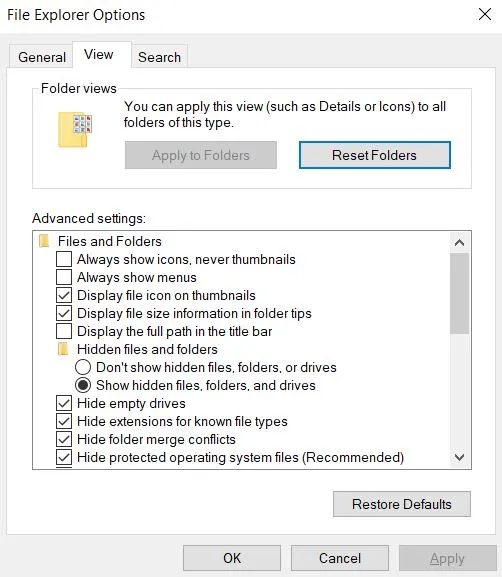
Video walkthrough for this step:
How to Uninstall the Altrsik Service Application
It’s possible that you have an actual app named Altrsik installed in your system. Though it won’t solve everything, yu must still find it in your system settings and attempt to uninstall it from there. Here is how you can do that:
Open the Start Menu, search “Apps & Features,” and then examine the list. Sort installations by date. Malware often installs around the time unusual symptoms appear.
Remove each suspicious application right away. Write down the names of any unfamiliar programs before deletion, as these names matter in later steps.
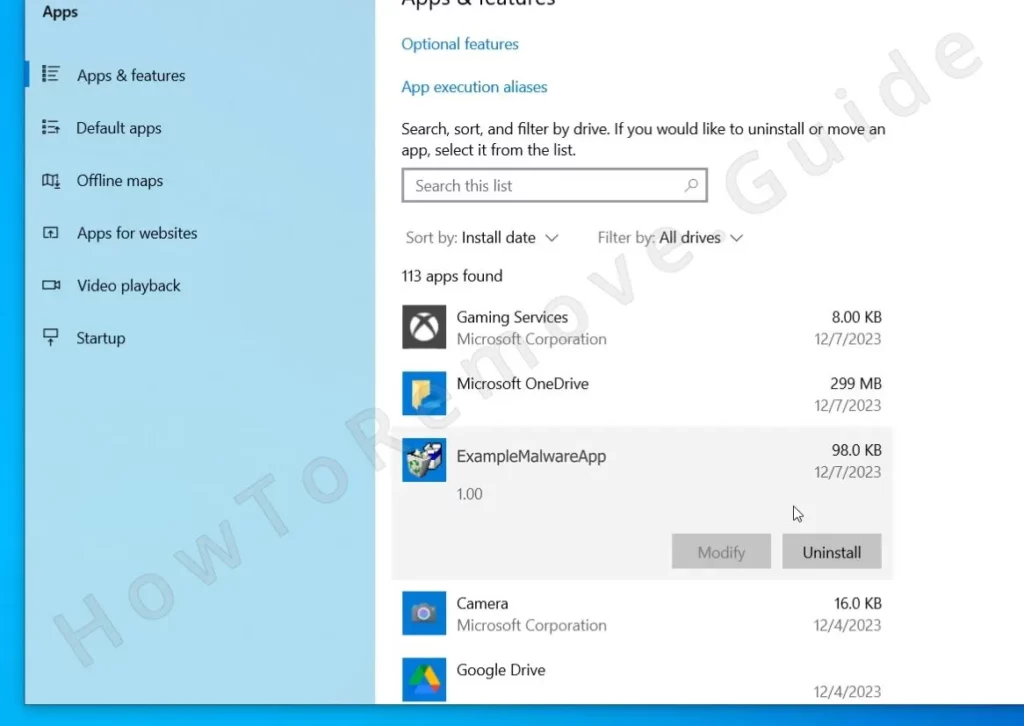
If you see Altrsik here, uninstall immediately. Removing this application won’t solve the problem alone. Malware typically embeds in other locations, making this just the beginning. Effective removal demands thoroughness.
Video walkthrough for this step:
How to Get Rid of Altrsik Service in the Task Manager
The Task Manager is the next place where you must look for signs of Altrsik. You’ll likely notice its process or processes there – you must stop them but also delete their data. This step is very important, so take your time to perform it correctly:
Open Task Manager using Ctrl + Shift + Esc. Malware often uses misleading names. Sorting by Memory and CPU usage can spotlight unusual items, as rogue tasks often consume high resources.
Right-click on suspicious processes and select “Open File Location.” If you see an unfamiliar folder, delete its contents immediately. Deleting the folder afterward helps prevent relaunches.
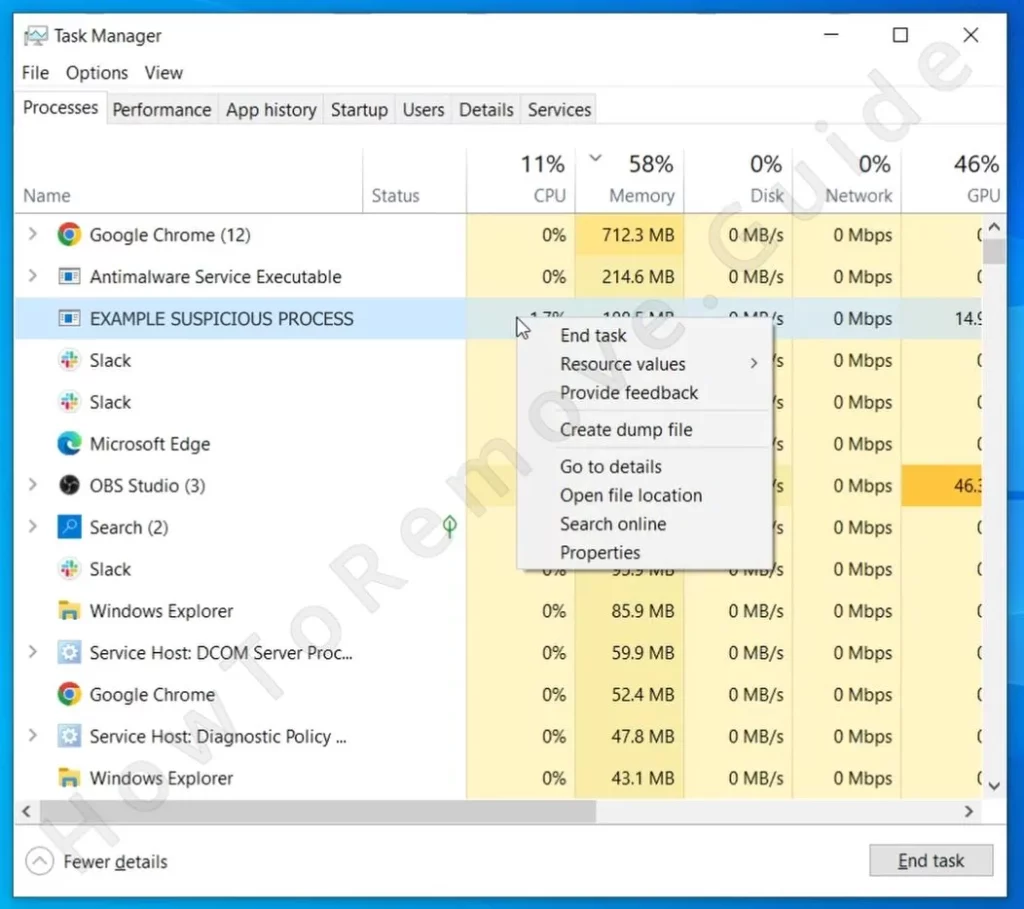
If files resist deletion, use LockHunter (it must already be installed on your PC):
Right-click, select “What’s locking this file…”, and then hit Delete.
Repeat these steps for any processes showing signs of abnormal activity. Any overlooked process might allow malware to linger.
Once finished with deletions, return to Task Manager and select “End Task” on any remaining suspicious items.
This disrupts background malware activities, halting its attempts to operate undetected.

Video walkthrough for this step:
How to Delete Persistent Files with Lock Hunter
How to Delete Altrsik Virus Files
You may have deleted the file location folders of the Altrsik processes, but there are still likely rogue files in other locations that must also be taken care of. Below, I show you the locations where you must look for them. Again, if a given file resists deletion, just use LockHunter to deal with it.
Now locate files and folders linked to Altrsik in specific system directories. First, navigate to C:\ProgramData\Microsoft\Windows\Start Menu\Programs\Startup. Look for suspicious files here, especially anything related to Altrsik. In cases of uncertainty, delete every file except desktop.ini. Ignoring questionable files risks leaving open malware pathways.
Next, go to C:\Users\YourUsername\AppData\Roaming\Microsoft\Windows\Start Menu\Programs\Startup and repeat the process.
Proceed to C:\Program Files and C:\Program Files (x86), scanning for folders named Altrsik or related terms. Again, delete anything that looks sketchy.
Finally, access your Temp folder by typing “%TEMP%” in the Start Menu. Clear every file here.
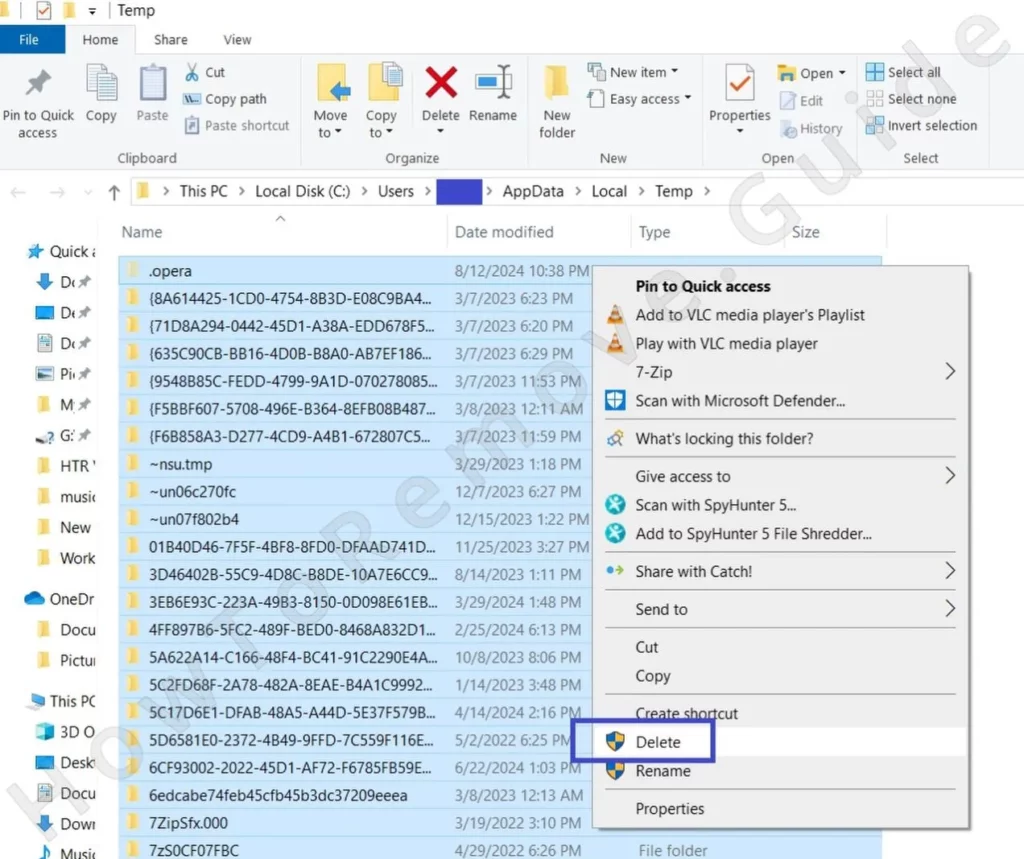
Malware often lurks in temporary folders. Leaving files untouched in this folder risks reinfection.
How to Remove Altrsik Malware Tasks
The Task Scheduler can allow the Altrsik virus to come back if there’s a task there that lets it reinstall. Do not forget to check this part of your system. Most users ignore it and that’s how malware is able to get reinstalled even after it’s been removed.
Open Task Scheduler by typing “Task Scheduler” in the Start Menu search and pressing Enter. Within the Task Scheduler Library, scrutinize every entry carefully.
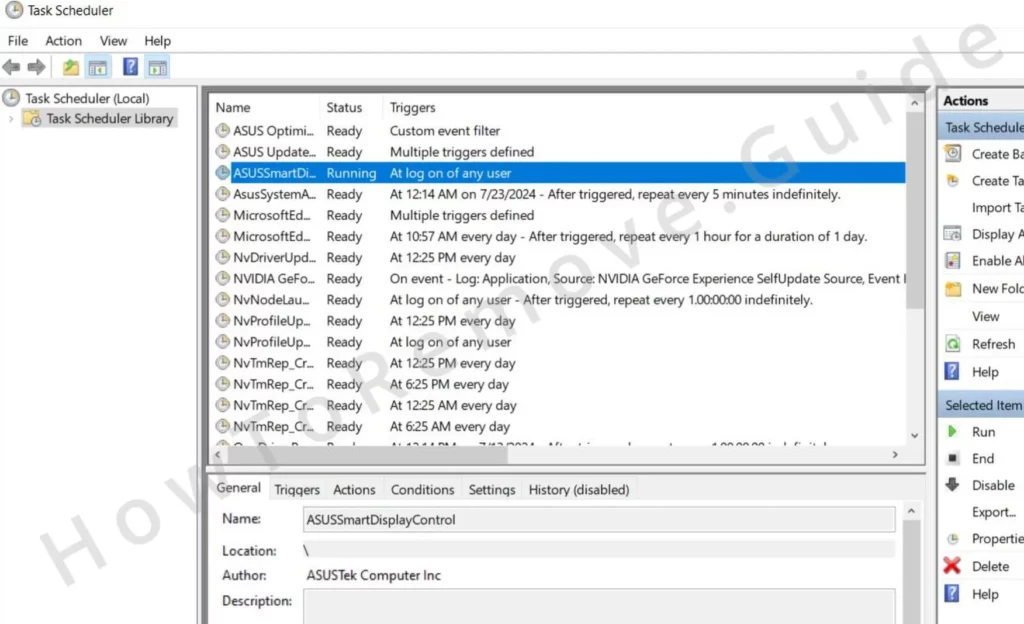
Unfamiliar tasks with names linked to unexpected locations should raise suspicions. Right-click each task and choose Properties. If the Actions tab shows file paths pointing to AppData, Roaming, or any suspicious .exe file, delete the task immediately.
Identifying these tasks reduces the chance of Altrsik returning. Overlooking a scheduled task often results in the malware reappearing, despite thorough manual deletions. Eliminate any questionable entries to prevent these stealthy reactivations. A few minutes here can save hours of headache later.
Video walkthrough for this step:
Delete Altrsik Malware Registry Keys
Lastly, you must clean the Registry of your system from rogue Altrsik settings. Be very careful here because deleting something you shouldn’t can cause further problems. If you aren’t sure what to delete, I once again remind you that SpyHunter 5 is a valid alternative for dealing with Altrsik that won’t require you to manually scan through your system registry. That said, if you are ready to do this hands-on, here’s how:
- Registry Editor by searching “Registry Editor” in the Start Menu and select Run as Administrator.
- In the Edit menu, choose “Find” and search “Altrsik.”
- Delete any suspicious entry found on the left panel. Each deleted entry should undergo a repeat search. Multiple entries often remain scattered in the Registry.
- Search for any entries related to other deleted programs from the Apps & Features step. Those entries must go too. Write down each name from the previous list to simplify this search.
Once you are done with the registry cleanup (provided you’ve done it correctly), the Altrsik should be fully gone from your system.
Video walkthrough for this step:
Finalizing the Removal of Altrsik
So, you’ve followed the earlier steps to remove Altrsik, but how can you be absolutely sure it’s gone for good? Think of this as the final sweep to catch any lingering fragments that might still be hiding in your system. Keep in mind, though—this won’t work if you skipped the earlier steps. If the service is still active, it could simply regenerate files, undoing your hard work.
Use Command Prompt to Delete Altrsik Services
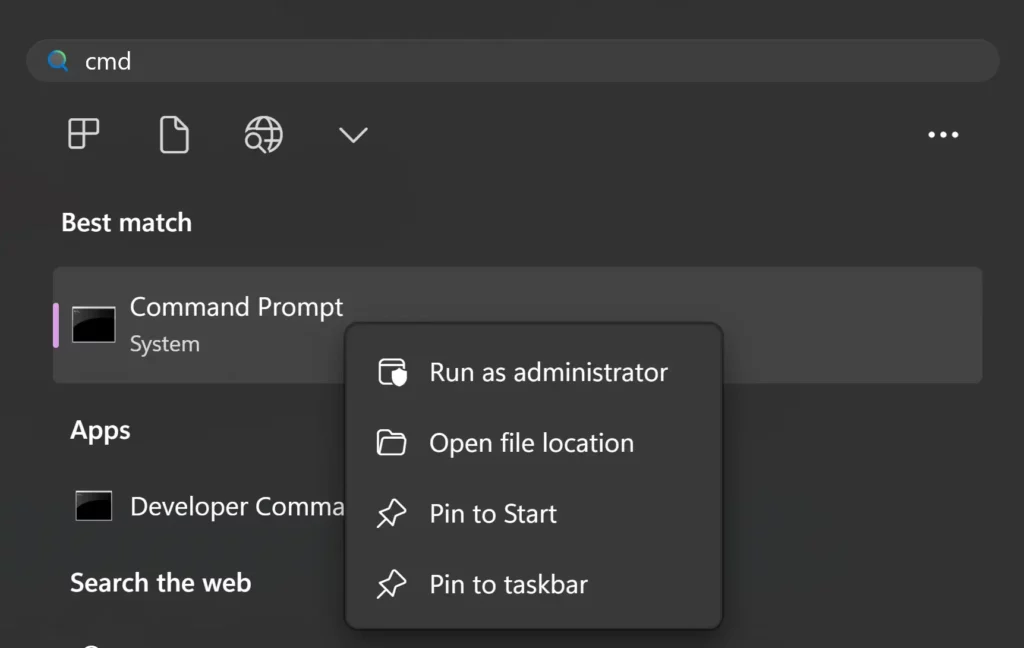
Start by hitting the Windows key and typing cmd. When the Command Prompt icon appears, right-click it and select Run as administrator. Once the command window opens, carefully type the following command:
arduinoCopyEditsc delete altrsik
Then press Enter. If the service is still active, you’ll receive confirmation that it has been found and deleted. But don’t worry if it doesn’t find anything—that just means you’ve already done a thorough job earlier in the process.
Restart and Monitor Your System
Once you’ve run the command, restart your computer. This ensures that all changes take effect and clears any remnants lingering in your system’s memory. After restarting, keep an eye on your system for a few days. Pay attention to performance issues like overheating, high CPU usage, or unexpected pop-ups—these could be signs that something is still wrong.
If you notice anything suspicious, consider running a deep scan with a trusted anti-malware tool like SpyHunter 5 to ensure your system is clean.
What is the Altrsik Virus?
The Altrsik virus is a malicious cryptocurrency miner that silently exploits your computer’s processing power to mine digital currencies such as Monero and Zcash. Unlike legitimate mining software, which operates transparently and with user approval, Altrsik infiltrates your system without consent. Once installed, it runs quietly in the background, overloading your CPU and RAM while you remain unaware.
This constant strain can lead to overheating, sluggish performance, and long-term hardware damage. Worse, none of the cryptocurrency mined benefits you. Instead, it’s sent directly to the cybercriminals who deployed the malware, leaving you with increased energy bills and a system that’s struggling to keep up.
Trojans like this one typically arrive through bundled downloads. For instance, one user reported installing a tool for Roblox shaders, only to find Altrsik hitching a ride. It can also infiltrate systems via mods for popular games like Minecraft or through third-party console emulators. Even if the primary app is legitimate, bundled malware can sneak in during installation—especially when users skip over optional installation prompts.
Once on your device, the malware embeds itself into startup processes, ensuring it launches every time your computer boots. To avoid detection, it may limit its resource usage just enough to stay under the radar, prolonging the damage it causes over time.
To protect yourself, always download software from trusted sources, carefully review installation prompts, and deselect any optional software you didn’t explicitly request. A reliable antivirus program is another essential layer of defense, as it can detect and remove threats like Altrsik before they cause serious harm.
Tips to Avoid Altrsik in the Future
We all know the basics: don’t download pirated software, avoid shady websites, and never click on sketchy email links. But beyond these golden rules, there are a few lesser-known steps that can dramatically reduce your risk of encountering malware like Altrsik.
Disable Automatic Downloads
One simple change can save you from a world of trouble: stop your browser from downloading files automatically. Head to Settings > Downloads in your browser and enable the option to always ask where to save files before downloading. This extra layer of control ensures that no file can sneak onto your system without your permission.
Turn On Enhanced Security in Your Browser
Modern browsers are packed with security features, but they’re not always enabled by default. If you want to stay ahead of malware threats, take a few minutes to turn them on. For example, in Google Chrome, go to Privacy and Security > Security and enable Enhanced protection and Always use secure connections. Other browsers have similar options, so take the time to explore your settings and activate them.
Install an Ad-Blocker
Ad-blockers aren’t just for skipping YouTube ads—they’re a powerful security tool. They block pop-ups, prevent redirects to malicious websites, and warn you if you’re about to visit a suspicious page. By cutting off one of the primary ways malware like Altrsik spreads, ad-blockers can significantly enhance your online safety.

Leave a Reply